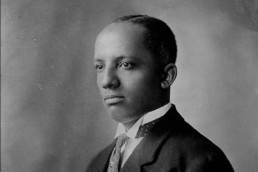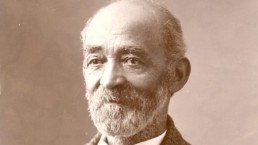The History of the Black History Month
Black History Month is observed each February in the United States, many people are not aware of how this started. And most people do not know that a Harvard-trained historian Carter G. Woodson is the man behind this tradition. As a descendent of a formerly enslaved race, he was thoroughly familiar with how black Americans were being left out of the narrative of American history. His dream to correct this glaring oversight realized when he and an organization funded by him, the Association for the Study of Negro Life and History (ASNLH) announced and celebrated Negro History Week in 1925 during February, as the month encompasses the birthdays of both Abraham Lincoln and Frederick Douglass.
Woodson hoped that Negro History Week would encourage better relations between black and white people in the United States as well as inspire young Black Americans to celebrate the accomplishments and contributions of their ancestors.
The response from the celebration of the Black History Week was overwhelming: Black history clubs sprang up; teachers demanded materials to instruct their pupils; and progressive whites, not simply white scholars and philanthropists, stepped forward to endorse the effort.
During the Civil Rights Movement, South’s Freedom Schools started observing the week and its curriculum to be a part of the mission. There were major problems with the then history textbooks like in the mid-1960s, the most popular textbook for eighth-grade U.S. history classes mentioned only two black people in the entire century of history that had transpired since the Civil War. To rectify such issues, colleges and universities across the country transformed the week into a Black History Month on campus.
American educators and historians both white and black started observing black history week and expanding the historical narrative to include black Americans. In 1976, when the USA celebrated its bicentennial, Woodman’s ASALH extended the weeklong celebration into a month, and that was the beginning of the Black History month.
President Gerald Ford urged Americans to observe Black History Month, but it was President Carter who officially recognized Black History Month in 1978. Each year, the ASALH gave Negro History Week themes, and that tradition has extended into Black History Month to help narrow people's focus to aspects of Black history. In 2021, the theme is "The Black Family: Representation, Identity, and Diversity".
Taking a stand to help others
 Kia D to speak at the UNT on Survivor Advocate Program
Kia D to speak at the UNT on Survivor Advocate Program
Sometimes one inspiring story, one kind word or a small encouragement can change a life. A small support can help a victim become a survivor. This is the mission of Kia D.
Kia D, today, is the Founder and the CEO of the popular radio network “wetalkradio.com”, and a non-profit “Heels on the Move to Heal”, but once she has been a victim of domestic violence and sexual assault. When she left her abuser, she was not left with anything but courage and strength to rebuild her life once again.
Kia D is going to speak at UNT in March 2021 for their Survivor Advocate program.
Her participation in this program is in alignment with her work to let others know that it is possible to overcome the trauma of domestic violence and sexual assault. Being the CEO of WeTalkRadio Radio Station and founder of “Heels on the Move to Heal”, she uses her platform as a survivor to supply others like her with clothes and resources. Heels on the Move to Heal also stages an annual charity fashion show, where local youth create and produce local events, allowing them to explore roles like emcee, performer, producer, DJ, photographer and videographer.
She truly believes that it is more important to walk with people, just pointing in the right direction may not be enough.
John W. Jones: The runaway slave who buried nearly 3000 confederate soldiers
Who was John Jones? John Jones was a simple man with a fantastic back story. John Jones was born in Virginia in June of 1817. Jones had a hard life. He was a slave. In 1844 Jones left Virginia headed for the North in search of a better life, in search of his freedom. Jones made his way out of Virginia, fighting slave hunters in Virginia and Maryland. Jones made his way to upstate New York.
As a freeman, John would build a happy life in New York State. He became a respected Elmira society member. He would take a wife and become a father of three sons and one daughter. The family had been honorable members of a church.
If you take a walk in Woodlawn Cemetery in Elmira, New York, you will see the legacy of John Jones. He and his family lived in a small house on Woodlawn Cemetery's grounds. The family home still stands and is a historical museum. John Jones left a forever-lasting mark in the graveyard of Woodlawn Cemetery.
Woodlawn the resting place for many men who lost their lives in the American Civil War. There was a prison camp located in Upstate New York, and this camp was a place where Confederate soldiers were held. The Confederates who died in the camp were laid to rest in the cemetery. Jones was put in charge of the burials. He laid the confederate and union soldiers alike to rest on these grounds. Jones took decided to make a statement about the war; before burial, Jones would carefully place each man's belongings in a safe place and, if possible, label the items with the dead men’s identifying details.
What gives John Jones a place in Civil War History is the graveyard's Civil War section's symbolic design. Because Jones kept such organized records, he knew the identity of each soldier. Jones knew which bodies belong to union soldiers and which belonged to the confederate soldiers. To make a statement, Jon Jones, but all of the graves belonging to Confederate soldiers in one place and been surrounded that plot of land with all of the graves belonging to Union Soldiers. His choice to forever imprison the confederates will forever be a reminder of the power of perseverance.
- Keely Messino
The Kia D Unplugged Show feat. Civil Rights Activist Mark Hughes
The Kia D Unplugged Show feat. Civil Rights Activist Mark Hughes
The Cave Radio hosted by T. Smiley and Big Joe
The Cave Radio hosted by T. Smiley and Big Joe
#MenTalk
#Sports
Kia D Unplugged
Host of the show, Kia D, brings liveliness and confidence to the web that is truly rare. Kia D is a forty-something mother of 2 that has been lively since birth. Not only is this graduate of the University of North Texas the host of this ever-popular radio show, but she is also the founder of WeTalkRadio and WeTeach Radio Broadcasting, a Soror (Zeta Phi Beta Sorority Inc.), an educator, and a highly sought out speaker and emcee. Kia D is also your 2013 Ms. Arlington Texas Plus America. In 2018, Kia D founded Heels on the Move to Heal, a Texas-based 501(c)3 organization that focuses on empowering families that have experienced domestic violence/sexual assault. She is the featured author in two books, Celebrating Me and Unselfish Women. Kia D is set to release her first book in 2021. Kia D is also a Commercial Energy Consultant assisting business owners with saving money on their energy bills.
For sponsorships, donations, booking and/or information contact [email protected].
Click here to check out Kia D on YouTube










